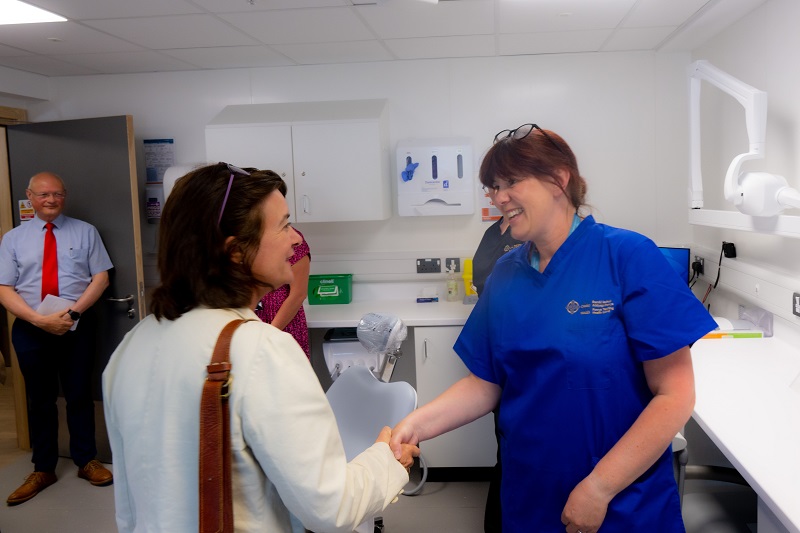Construction work has completed on the significant redevelopment of Bro Ddyfi Community Hospital in North Wales, creating an integrated health and wellbeing facility on the site of the former Machynlleth Union Workhouse, which was built in 1860.
The project has created a multi-disciplinary facility, housing community and primary healthcare, adult mental health treatment, outpatient facilities, and women’s and children’s clinics, all under one roof.
Intended to improve the lives of people living in Dyfi Valley for generations to come, construction is now complete, with the first patients coming through the doors last month.
Unique challenges
Operating under Perfect Circle’s unique collaboration, Pick Everard was appointed through the SCAPE Consultancy Framework to provide specialist project management, cost management, and CDM advisory services, with Willmott Dixon delivering the design and construction.
Alex Dovey, director of project management at Pick Everard, said: “Working with an existing site always brings unique challenges, particularly for older structures.
“There were several instances throughout the phased project where collaborative efforts across the delivery team were critical to success, such as securing the business case for funding and amendments to the design, born from concerns of the existing timber frame’s ability to bear a second storey load.
“To ensure the all-important harmonisation, we implemented a positive, clear, and assertive communications strategy and this kept everyone energised and co-ordinated throughout a three-phased build and helped to minimise any potential disruption to occupied areas of the site.”
He added: “Working on a project like this, that brings together so many varied stakeholders from across the NHS, social care, third sectors, and the construction supply chain, reflects the collaborative approach that we are passionate in delivering.”
Welsh Health Minister, Eluned Morgan, met with staff at the official opening of the new hospital
Collaborative working
Welsh government funding has been crucial to the viability of the project, with robust designs being key to the initial business case, securing the necessary backing.
Combined with the finished facility incorporating a variety of health services, engagement formed a central pillar to project strategy, co-ordinating the various requirements and expectations across stakeholders.
The scheme responded to targets set out in the Welsh Government’s publication Prosperity for All: A Low Carbon Wales, with a decarbonisation report developed by the design team as part of the Full Business Case (FBC) documentation.
And additional funding was made available by Welsh Government to develop a number fabric and Mechanical, Electrical and Plumbing (MEP) interventions that successfully impacted the CO2 emissions of the building.
This resulted in initiatives such as solar panels being fitted between the natural slate roof tiles, helping the building conform with the planning constraints of being in a conservation area.
Building on history
The insulation in the building fabric was also enhanced, with triple glazing helping to improve acoustic as well as thermal performance. In addition, electrical vehicle charging points were introduced at the site, with the containment infrastructure futureproofed to allow for additional points as demand increases.
With the hospital holding such a prominent position within the local landscape, the project team worked closely with the community to respect and build upon the site’s history, while also achieving the maximum benefit for people in the future.
